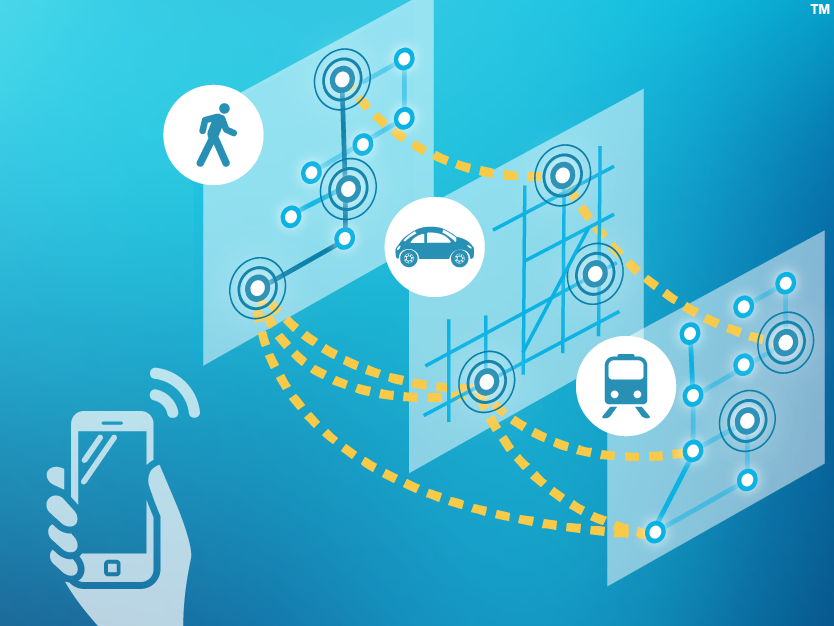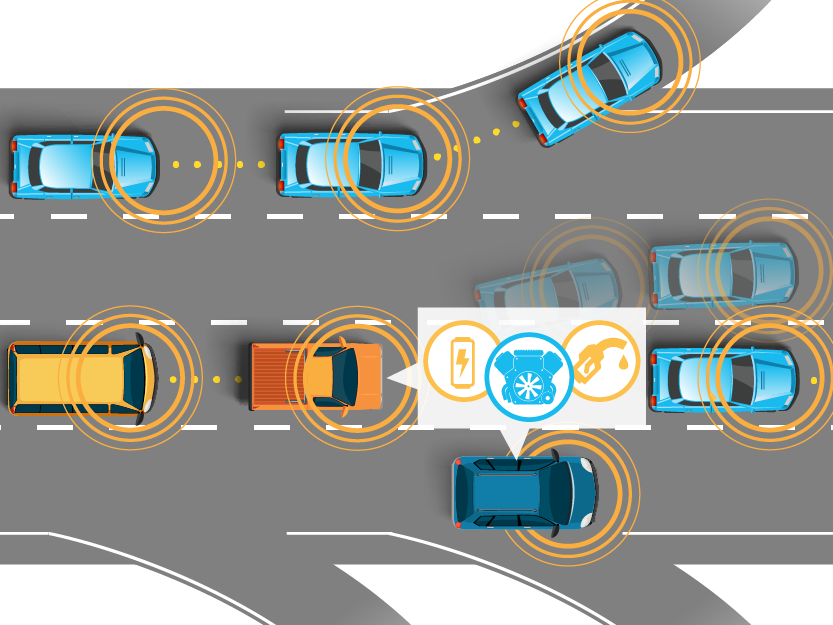
Traveling Smarter While Saving Energy
Americans use a lot of energy to move themselves and their stuff. Over one quarter of all the energy consumed in the United States goes directly to transportation, equivalent to about 4.8 billion barrels of oil per year. Of course, where there is lots of energy being used, there are opportunities to make big improvements.
Many ARPA-E programs seek to boost transportation efficiency and diversify energy sources—through better fuels, new batteries, or high-powered electronics. Moreover, increasingly available connected and automated vehicles (CAV) present incredible opportunities to transform the energy efficiency of transportation. Two ARPA-E programs, TRANSNET and NEXTCAR, lie on the cutting edge of transportation innovation, using connected vehicles, cloud computing, and emerging vehicle control technologies to redefine how we move people and goods.
TRANSNET
When coding software, it is critical to ensure the program is using the computer’s hardware in the most efficient way possible. This is called “optimization,” and in environments where resources can be scarce, it can save time, money, and energy.
TRANSNET projects take this principle of optimization and apply it to the transportation sector. Using new tools available to the average driver, TRANSNET projects seek to boost the overall efficiency of the transportation system by encouraging people to choose the best mode for their journey, whether it be a personal car, the subway, or even a bike share. This task is overwhelmingly complex, and only feasible now thanks to our ability to process huge amounts of data at once—essentially modeling a city or region’s entire transportation network.

Project Spotlight: Georgia Tech Research Corporation
Researchers at Georgia Tech are conducting analysis of real-time transportation network data and combining it with detailed simulations. Using this information, the team hopes to offer drivers on-the-fly tips to reduce energy consumption as they travel. The team will use big data to identify traffic accidents and recurring congestion areas and provide drivers suggestions for altering departure times, routes, or even their mode of transport—all without increasing the time or cost of the trip.
NEXTCAR
Our vehicles have become increasingly sophisticated—like smartphones on wheels—offering consumers a host of safety and convenience technologies like traffic aware cruise control (TACC), emergency braking, and even limited self-driving on congested roads. So far, these features have sought to make commuting easier and safer for drivers. But they can do much more.

NEXTCAR projects will put these technologies to work cutting individual vehicle energy use by 20 percent. By creating systems that allow these smart tools to communicate with the engine, transmission and some vehicle controls, NEXTCAR technologies can begin predicting future road or traffic conditions, allowing a car, truck, or bus to react to upcoming events in the most efficient way possible.
Project Spotlight: Michigan Technological University
The Michigan Tech team is using cloud computing and a new vehicle controller to build a more efficient plug-in hybrid electric vehicle. Information from the cloud will supply the vehicle controller with the information it needs to predict future traffic and road conditions, allowing it to prepare the engine and transmission for upcoming needs. Michigan Tech’s model-based predictive controller (MPC) will use information provided by a traffic simulation system to enable features like eco-routing, which would allow drivers to choose the most energy-efficient route to take.
WHAT THE FUTURE HOLDS
Eventually, our cars will outgrow the need for a human driver. The rise of fully self-driving vehicles—the largest upheaval in mobility since the invention of the automobile—could have enormous implications for our economy and energy use. Ensuring this next generation of transportation will be smart and energy efficient requires responding to a host of new challenges. To kick-start that discussion, ARPA-E Program Director Dr. Jason Rugolo asked this year’s Energy Innovation Summit attendees for their ideas.
Autonomous vehicles could one day rule our highways. But as driving requires increasingly less human intervention, people could become more comfortable with much longer commutes on more congested roads—threatening to undo the energy benefits of a driverless system. Furthermore, as vehicles become safer, it is possible they will begin traveling at much higher speeds. Due to the way a car moves through air, faster travel means using much more energy per mile. Simultaneously increasing vehicle miles traveled and the fuel intensity of those miles could dramatically increase the amount of energy consumed for transportation.
Overcoming these challenges means looking at new ways to design safe, fast, and energy efficient self-driving cars. As driverless technology improves, there are many opportunities to build cars that are lighter and more aerodynamic. A car that never crashes might not need a heavy steel structure around its occupants; a car without a steering wheel might not require the extra wide, two-by-two seating arrangement in almost every automobile today.
What’s needed, Dr. Rugolo argues, is a ground-up design approach for self-driving cars based on core principles: safe, comfortable, fast, and affordable, to name a few, while considering efficiency all the while. By following this approach, Rugolo believes, the transition to driverless vehicles could usher in a new era of ultra-efficient, ultra-safe transportation.
Increasing energy efficiency across all parts of the economy is a chief aim of ARPA-E’s mission. By working to reduce the amount of energy needed to move people and goods around the United States, ARPA-E projects are keeping America competitive in this fast-moving field while helping all of us use energy smarter.
Stay in touch with ARPA-E by subscribing to our newsletter.
